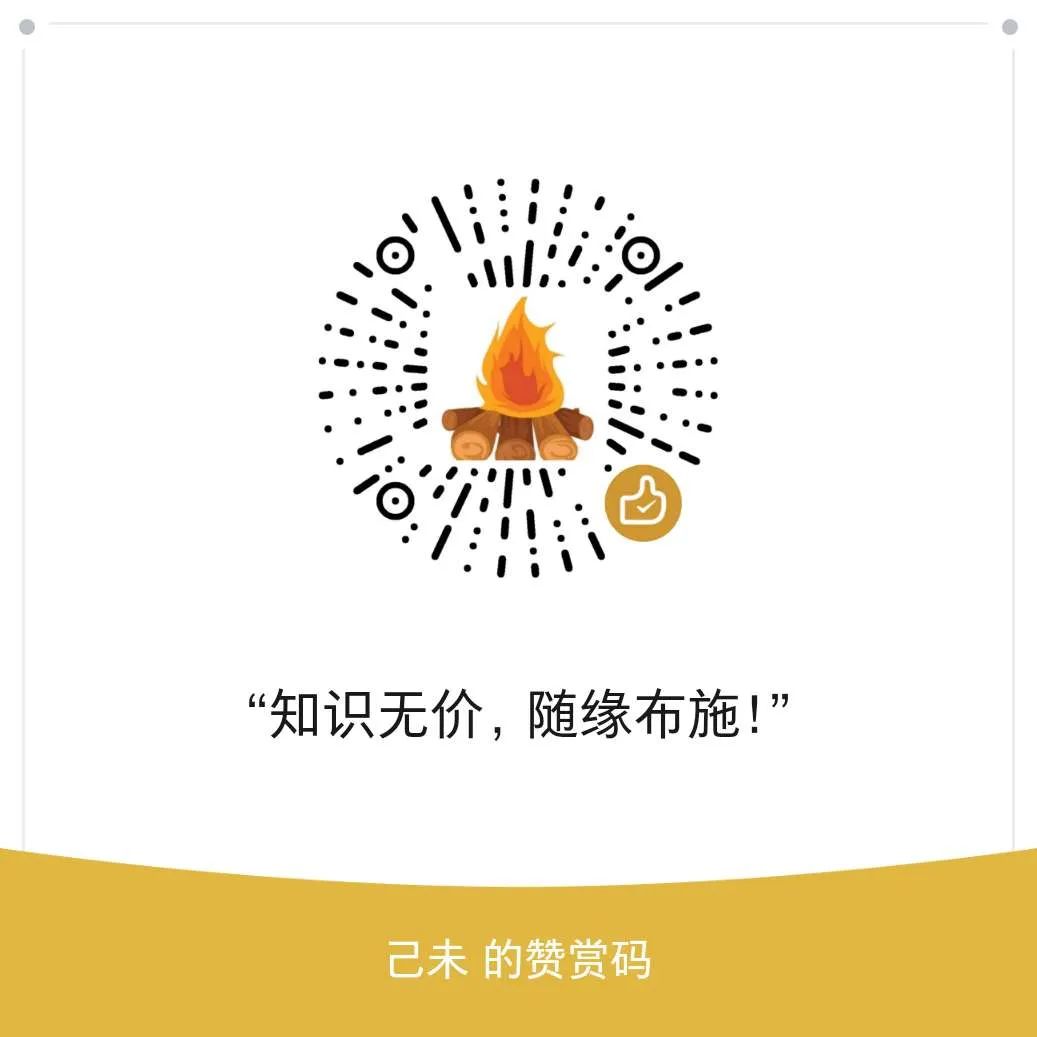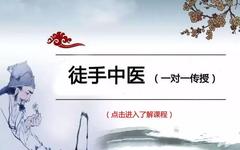
Diseases can be categorized into eight principles: cold, heat, deficiency, excess, exterior, interior, yin, and yang. The methods of differentiation in diagnosis are based on these principles.
The differentiation of cold and heat in a disease is reflected in symptoms such as thirst or lack thereof, the ability to retain fluids, preference for hot or cold foods, irritability or cold extremities, frequency and characteristics of urination, and the nature of bowel movements, as well as pulse characteristics. For instance, if a patient is thirsty and can retain fluids, prefers cold foods, is irritable, has short and red urination, and has a rapid pulse, this indicates heat. Conversely, if a patient is not thirsty, or has a false sense of thirst, prefers hot soups, has cold extremities, clear and frequent urination, loose stools, and a slow pulse, this indicates cold.
The differentiation of deficiency and excess is based on the presence or absence of sweating, whether there is chest or abdominal distension and pain, whether the distension decreases or not, whether the pain is tender or painful to touch, the duration of the illness, the constitution of the patient, and the characteristics of the pulse. If there is no sweating, persistent abdominal distension, pain that resists pressure, a recent onset of illness, a robust constitution, and a strong pulse, this indicates excess. If there is excessive sweating, abdominal distension that fluctuates, pain that is relieved by pressure, a long-standing illness, a weak constitution, and a weak pulse, this indicates deficiency.
The differentiation of exterior and interior is based on symptoms such as fever and chills, headache and abdominal pain, nasal congestion and dry mouth, the presence or absence of tongue coating, and the characteristics of the pulse. If there is fever with chills, headache, nasal congestion, a tongue without coating, and a floating pulse, this indicates an exterior condition. If there is tidal fever with aversion to heat, abdominal pain, dry mouth, yellow-black tongue coating, and a sinking pulse, this indicates an interior condition.
Regarding the differentiation of yin and yang, it encompasses the six principles mentioned above. Heat is yang, excess is yang, and exterior is yang; cold is yin, deficiency is yin, and interior is yin. Cold pathogens affect the exterior, representing yin within yang; heat pathogens penetrate the interior, representing yang within yin. Cold pathogens can enter the interior, representing yin within yin; heat pathogens can reach the exterior, representing yang within yang. The distinction between true yin and true yang is also significant. For example, if the pulse is rapid and weak, with signs of internal heat such as dry mouth and lips, constipation, and qi counterflow, this indicates a deficiency of true yin; if the pulse is large and weak, with fatigue, pale lips, a harmonious mouth, cold muscles, and loose stools, this indicates a deficiency of true yang.
The distinctions of cold, heat, deficiency, excess, exterior, interior, yin, and yang are fundamentally these. However, in cases of heat syndrome where the patient prefers hot drinks, it indicates a seeking of warmth. In cases of cold syndrome where the patient prefers cold drinks but cannot drink, it indicates a false sense of thirst. In cases of heat syndrome with loose stools, it indicates heat-induced diarrhea. In cases of cold syndrome with hard stools, it is termed yin constipation. In cases of heat syndrome with cold extremities, it indicates deep heat with deep cold; in cases of cold syndrome with irritability, it indicates yin irritability. In cases of sweating with excess syndrome, it indicates heat pathogens penetrating the interior. In cases of no sweating with deficiency syndrome, it indicates insufficient body fluids. In cases of aversion to cold with interior syndrome, it indicates direct exposure to cold. In cases of aversion to heat and thirst with exterior syndrome, it indicates a warm disease that has reached the exterior. This is the principle of yin and yang transformation, which is crucial for treating diseases, and differentiation should not be delayed.
The eight principles of differentiation are the overarching framework for various diagnostic methods in TCM.
Differentiation refers to the analysis and identification of disease symptoms, which is the primary process and method for understanding and diagnosing diseases. Differentiation involves recognizing and analyzing symptoms. Symptoms refer to the comprehensive manifestation of the body’s response to pathogenic factors and conditions, as well as the disordered relationships between the organs, meridians, qi, blood, and body fluids. Therefore, clarifying a specific symptom is a summary of the pathological conditions, including the stage of disease development, the location of the disease, the strength of the pathogenic and righteous qi, and the balance of yin and yang.
The process of differentiation is based on theories of organs, meridians, qi, blood, body fluids, and pathogenic factors, and involves synthesizing, summarizing, analyzing, reasoning, and judging the symptoms and signs collected through the four diagnostic methods: observation, listening, inquiry, and palpation. This allows for an understanding of the disease and making an accurate diagnosis.
Differentiation and treatment are two crucial aspects of TCM theory, methods, formulas, and medicines in clinical practice. They are interconnected and inseparable. Differentiation is the understanding of the disease, while treatment is the corresponding therapeutic approach based on the diagnosis. Differentiation is the premise and basis for treatment, while treatment is the objective and objective standard for verifying the correctness of differentiation.
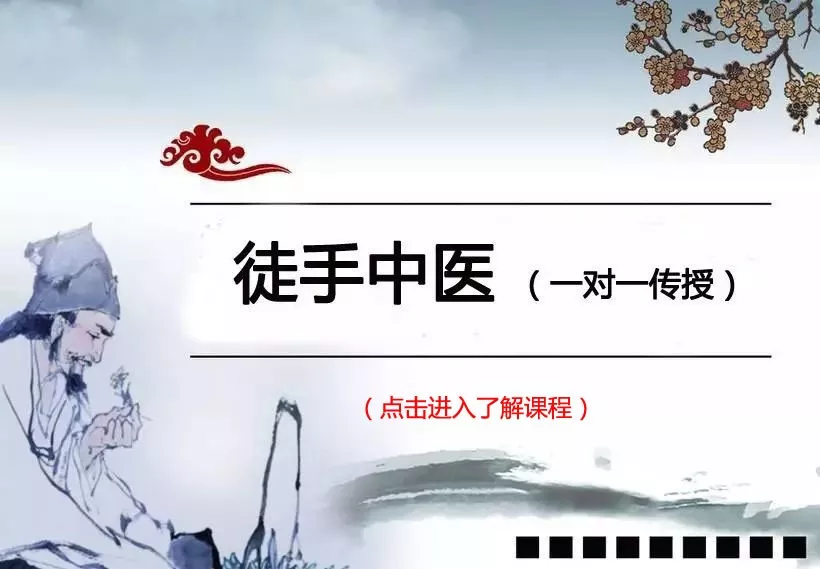
Symptoms refer to individual signs, which are recognized similarly in both Chinese and Western medicine, such as headache, fever, cough, palpitations, nausea, etc.
Disease refers to the name of the illness. In TCM, only a few disease names correspond with Western medicine, such as measles, diphtheria, tetanus, asthma, dysentery, and heat stroke, while most terms differ. Due to the differences in theoretical systems, the understanding of diseases varies. Western medicine’s understanding of diseases is based on human anatomy and pathophysiology, with clinical diagnosis relying on the patient’s subjective symptoms, physical examination, and laboratory tests. TCM views diseases as the result of imbalances in yin and yang, with clinical differentiation primarily based on the patient’s symptoms and signs (such as tongue and pulse), without necessarily identifying a disease name but rather clarifying the syndrome.
The term “syndrome” refers to evidence or symptoms, which is not merely a symptom or subjective feeling but a group of signs. It is also TCM’s diagnostic concept of disease. A syndrome is a set of specific clinical manifestations (symptoms, signs, etc.) that encompasses the etiology, location of the disease, nature of the disease, and the comparative strength of the righteous and pathogenic qi. A syndrome is derived from analyzing symptoms and signs, summarizing them into a concept that better explains the essence of the disease.
TCM differentiation has been formed through long-term clinical practice, with various methods, primarily including the eight principles, etiology differentiation, qi and blood differentiation, organ differentiation, defensive qi, nutritive qi, and blood differentiation, and the three burners differentiation. Among these, the eight principles are the overarching framework for various differentiation methods.
The eight principles of differentiation are based on the materials obtained from the four diagnostic methods, conducting a comprehensive analysis to explore the nature of the disease, the location of the disease, the severity of the disease, the strength of the body’s response, and the comparative strength of the righteous and pathogenic qi, summarizing them into eight categories: yin, yang, exterior, interior, cold, heat, deficiency, and excess. This is the fundamental method of TCM differentiation, encompassing the commonalities of various differentiation methods, and plays a role in simplifying complex conditions and highlighting key points in the diagnostic process.
Although the manifestations of diseases are extremely complex, they can generally be categorized into the eight principles. The overall categories of diseases include yin syndromes and yang syndromes; the depth of the disease can be divided into exterior and interior; the imbalance of yin and yang, with yang excess or yin deficiency indicating heat syndromes, and yang deficiency or yin excess indicating cold syndromes; the strength of the pathogenic and righteous qi, with strong pathogenic qi indicating excess syndromes and weak righteous qi indicating deficiency syndromes. Therefore, the eight principles of differentiation analyze the ever-changing diseases according to the simple dichotomy of exterior and interior, cold and heat, deficiency and excess, yin and yang, revealing the contradictions within the disease, thus grasping the nature of the disease in terms of exterior or interior, cold or heat, deficiency or excess, and yin or yang. This is the fundamental spirit of the eight principles.
1. Exterior and Interior
The terms exterior and interior indicate the depth of the disease and the severity of the condition. Generally speaking, the skin, hair, and superficial meridians belong to the exterior; the organs, blood vessels, bone marrow, and internal meridians belong to the interior. Exterior syndromes indicate that the disease is superficial and mild; interior syndromes indicate that the disease is deep and severe.
(1) Exterior Syndrome
Exterior syndrome refers to symptoms located superficially in the skin. Generally, this occurs when external pathogens invade the body through the skin and nose, leading to a series of symptoms as the righteous qi (defensive qi) resists the pathogens, often seen in the initial stage of external diseases. Exterior syndromes are characterized by sudden onset, short duration, superficial location, and mild severity. Commonly seen in the early stages of external heat diseases, such as upper respiratory infections, acute infectious diseases, and other initial stages of infectious diseases.
Main symptoms: fever and chills (or aversion to wind), headache, thin white tongue coating, floating pulse, often accompanied by symptoms such as muscle aches in the limbs and body, nasal congestion, and cough.
Due to the differences in the nature of external pathogens (cold or heat), and the varying strength of the body’s ability to resist these pathogens, exterior syndromes can be further divided into exterior cold, exterior heat, exterior deficiency, and exterior excess syndromes.
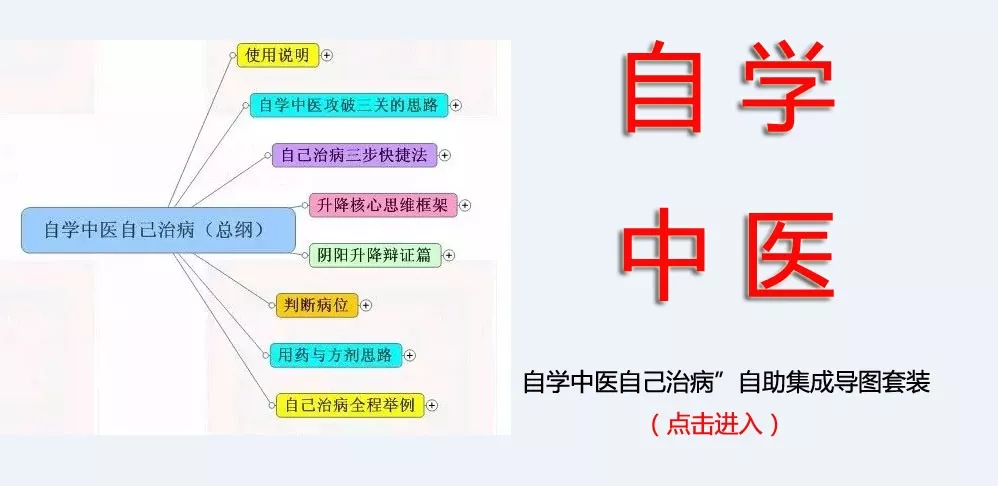
1. Exterior Cold Syndrome
Main symptoms: significant aversion to cold, mild fever, pronounced pain in the head and body, no sweating, clear nasal discharge, and no thirst. The tongue is pale red, with thin white and moist coating, and the pulse is floating and tight.
Pathogenesis: Cold pathogens are constrained in the skin or superficial layers, leading to a struggle between the righteous and pathogenic qi, hence the aversion to cold and fever. The invasion of pathogenic qi into the superficial meridians causes stagnation in the flow of defensive qi and blood, resulting in pain in the head and body. The struggle between righteous and pathogenic qi at the exterior leads to a floating pulse.
Treatment principle: Release the exterior with warm acrid herbs.
Common formulas: Ma Huang Tang (Ephedra Decoction).
2. Exterior Heat Syndrome
Main symptoms: significant fever, mild aversion to cold, headache, sore throat, sweating, thick nasal discharge, and thirst. The tongue is slightly red, with thin white coating that is not moist, and the pulse is floating and rapid.
Pathogenesis: The struggle between righteous and pathogenic qi at the exterior leads to fever and aversion to cold. Heat pathogens invade the defensive layer, causing sweating to escape. Heat damages body fluids, leading to thirst. Heat pathogens at the exterior result in a floating and rapid pulse.
Treatment principle: Release the exterior with cool acrid herbs.
Common formulas: Yin Qiao San (Honeysuckle and Forsythia Powder).
3. Exterior Deficiency Syndrome
Main symptoms: exterior symptoms with aversion to wind, sweating. The tongue is pale, with thin white coating, and the pulse is floating and weak.
Pathogenesis: The patient has a weak constitution, and the defensive yang is not firm, hence the aversion to wind and sweating, with a floating and weak pulse.
Treatment principle: Harmonize the nutritive and defensive qi, and release the exterior.
Common formulas: Gui Zhi Tang (Cinnamon Twig Decoction).
4. Exterior Excess Syndrome
Main symptoms: fever, aversion to cold, body aches, no sweating. The tongue is pale red, with thin white coating, and the pulse is floating and strong.
Pathogenesis: The pathogenic qi is strong, and the righteous qi is not weakened; the pathogenic qi constrains the skin, and the righteous qi resists the pathogenic qi, leading to fever and aversion to cold without sweating, with a floating and strong pulse.
Treatment principle: Release the exterior with warm acrid herbs.
Common formulas: Ma Huang Tang (Ephedra Decoction).
Distinguishing between exterior cold and exterior heat syndromes is based on the severity of aversion to cold and fever, as well as tongue and pulse characteristics. Exterior cold syndrome is characterized by significant aversion to cold and mild fever, while exterior heat syndrome is characterized by significant fever and mild aversion to cold. In exterior cold syndrome, the tongue coating is thin, white, and moist, and the pulse is floating and tight; in exterior heat syndrome, the tongue coating is thin, white, and not moist, and the pulse is floating and rapid. Additionally, wind-cold pathogens can transform into heat, and exterior cold syndrome can evolve into exterior heat syndrome as the external pathogen invades the skin.
Distinguishing between exterior deficiency and exterior excess syndromes involves considering the patient’s constitution, with sweating and lack of fluids as the basis. Exterior excess syndrome is characterized by exterior symptoms without sweating, commonly seen in younger, robust individuals; exterior deficiency syndrome is characterized by exterior symptoms with sweating, commonly seen in older, weaker individuals or those with chronic illnesses.
(2) Interior Syndrome
Interior syndrome refers to symptoms that are deeper than the exterior (involving organs, qi, blood, bone marrow, etc.).
The causes of interior syndrome can generally be categorized into three situations: first, the progression of an exterior syndrome where the exterior pathogen has not been resolved, penetrating into the interior and affecting the organs; second, direct invasion of the interior by external pathogens, such as abdominal cold or excessive consumption of cold foods leading to interior cold syndrome; third, internal injuries from emotional disturbances, overexertion, or dietary factors directly causing dysfunction of the organs, such as dizziness and pain in the liver, palpitations and shortness of breath in the heart, cough and wheezing in the lungs, abdominal distension and diarrhea in the spleen, and low back pain and urinary retention in the kidneys. Therefore, the clinical manifestations of interior syndrome are complex, and all symptoms that are not exterior syndromes belong to interior syndromes. In cases of external diseases, interior syndromes should also be combined with etiology differentiation and differentiation of defensive qi, nutritive qi, and blood; in cases of internal injuries, organ differentiation should be the primary focus. Interior syndromes need to be distinguished as interior cold, interior heat, interior deficiency, and interior excess (discussed in the context of cold-heat and deficiency-excess differentiation).
Distinguishing between exterior and interior syndromes is primarily based on the patient’s history, the nature of the disease, and changes in tongue coating and pulse. Generally, new or acute diseases are more likely to be exterior syndromes, while chronic or long-standing diseases are more likely to be interior syndromes. Fever with aversion to cold indicates an exterior syndrome; fever without aversion to cold or only cold without fever indicates an interior syndrome. Exterior syndromes often show no changes in tongue coating or only slight redness at the edges and tip of the tongue; interior syndromes often exhibit abnormal tongue coatings, with a floating pulse indicating an exterior syndrome and a sinking pulse indicating an interior syndrome.

(3) Half Exterior Half Interior Syndrome
This refers to a condition where the pathogenic factor is neither fully in the exterior nor fully in the interior, presenting symptoms that are neither typical of exterior nor interior syndromes.
Main symptoms: alternating cold and heat, chest and hypochondriac fullness, bitter taste and dry throat, irritability, nausea, lack of appetite, and dizziness. The tongue tip is red, with a mix of yellow and white coating, and the pulse is wiry.
Pathogenesis: The struggle between righteous and pathogenic qi occurs in the half exterior and half interior, leading to alternating cold and heat. The pathogen affects the half exterior and half interior, causing the gallbladder meridian to be affected, resulting in fullness in the chest and hypochondria, while heat in the gallbladder leads to disharmony between the liver and stomach, causing irritability, dizziness, nausea, and lack of appetite.
Treatment principle: Harmonize and resolve the exterior and interior.
Common formulas: Xiao Chai Hu Tang (Minor Bupleurum Decoction).
(4) Simultaneous Exterior and Interior Disease
This refers to the simultaneous presence of both exterior and interior syndromes at the same time, commonly seen in three situations: first, the initial onset of the disease presents both exterior and interior symptoms; second, at the time of onset, only exterior symptoms are present, but later, as the pathogen penetrates the interior, interior symptoms appear while exterior symptoms remain; third, if the original disease has not resolved, and new exterior symptoms arise, such as an original internal injury with subsequent external pathogen invasion, or an initial external pathogen invasion followed by dietary injury, this also constitutes simultaneous exterior and interior disease. The treatment principle is to resolve both the exterior and interior.
2. Cold and Heat
Cold and heat are the two principles used to differentiate the nature of diseases, summarizing the two types of syndromes that reflect the balance of yin and yang in the body. Generally, cold syndromes are manifestations of insufficient yang qi or the invasion of cold pathogens, while heat syndromes are manifestations of excessive yang qi or the invasion of heat pathogens. The principle states that excess yang leads to heat, excess yin leads to cold, deficiency of yang leads to cold, and deficiency of yin leads to heat. Differentiating between cold and heat is the basis for using warming or cooling herbs in treatment, as the principle states that cold is treated with heat and heat is treated with cold.
(1) Cold Syndrome
Cold syndrome is characterized by the invasion of cold pathogens (such as cold or damp pathogens) or the deficiency of yang and excess of yin, leading to weakened organ function and reduced activity. It can be divided into exterior cold syndrome and interior cold syndrome; exterior cold syndrome has been discussed in the context of exterior syndromes, while here we refer to interior cold syndrome.
Main symptoms: aversion to cold, cold limbs, no thirst or preference for hot drinks, pale complexion, cough with white phlegm, abdominal pain relieved by warmth, loose stools, and clear and frequent urination. The tongue is pale, with white coating, and the pulse is deep and slow.
Pathogenesis: Yang deficiency and excess of yin lead to cold symptoms, hence the aversion to cold and cold limbs. Cold in the spleen and stomach leads to abdominal pain relieved by warmth, and weak yang qi results in a deep and slow pulse.
Treatment principle: Warm the middle and dispel cold.
Common formulas: Fu Zi Li Zhong Tang (Aconite Decoction).
(2) Heat Syndrome
Heat syndrome is characterized by the invasion of heat pathogens (such as wind, heat, or fire pathogens) or excessive yang and deficiency of yin, leading to hyperactivity of organ function and depletion of body fluids. It can be divided into exterior heat syndrome and interior heat syndrome; exterior heat syndrome has been discussed in the context of exterior syndromes, while here we refer to interior heat syndrome.
Main symptoms: fever, no aversion to cold, irritability, thirst with a preference for cold drinks, red face and eyes, cough with yellow and thick phlegm, abdominal pain relieved by coolness, dry and hard stools, and short and red urination. The tongue is red, with yellow coating, and the pulse is rapid.
Pathogenesis: Excessive yang leads to fever and preference for coolness, heat damages body fluids leading to thirst, and heat causes short and red urination and dry and hard stools. The rapid pulse indicates heat.
Treatment principle: Clear heat.
Common formulas: Bai Hu Tang (White Tiger Decoction).
(3) Excess Heat and Deficiency Heat
Excess heat syndrome caused by the invasion of heat pathogens differs from deficiency heat syndrome caused by the depletion of yin fluids or hyperactivity of organ function, with different clinical manifestations and treatment principles. See the table below.
Table 3-3 Differentiation of Excess Heat and Deficiency Heat Syndromes
Classification
Common Symptoms
Different Symptoms
Treatment Principle
Common Formulas
Qi Deficiency
Pale or sallow complexion, fatigue, low voice, spontaneous sweating, reduced appetite, pale and swollen tongue, weak pulse
Shortness of breath, fatigue with exertion, and other significant symptoms, weak pulse
Tonify qi
Si Jun Zi Tang (Four Gentlemen Decoction)
Yang Deficiency
Aversion to cold, cold limbs, clear and frequent urination, diarrhea with clear stools, slow pulse
Tonify yang
Shen Qi Wan (Kidney Qi Pill), Ren Shen Rong Wan (Ginseng and Deer Antler Pill)
Blood Deficiency
Weight loss, dizziness, blurred vision, insomnia, palpitations, thin pulse
Pale complexion, numbness in hands and feet, pale lips and nails, pale tongue, weak pulse
Tonify blood
Si Wu Tang (Four Substance Decoction)
Yin Deficiency
Low fever or tidal fever, red cheeks, five palms hot, dry mouth, dry throat, night sweats, red tongue, thin or cracked tongue, little or no coating, rapid pulse
Tonify yin
Liu Wei Di Huang Wan (Six Flavor Rehmannia Pill)
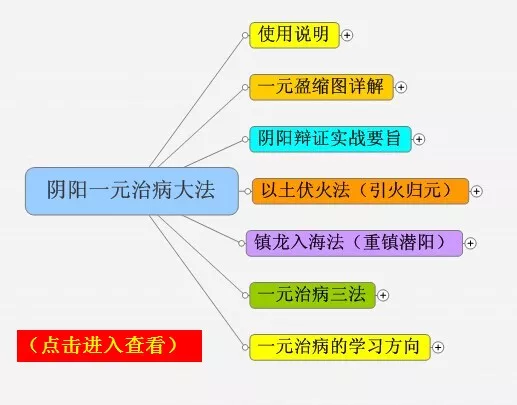
From the table above, it can be seen that qi deficiency and yang deficiency both indicate insufficient yang qi, hence the clinical manifestations are similar, with symptoms such as pale complexion, fatigue, and spontaneous sweating. However, there are distinctions: qi deficiency is characterized by deficiency without cold symptoms, while yang deficiency is characterized by deficiency with cold symptoms—aversion to cold, cold limbs, and slow pulse. Blood deficiency and yin deficiency both indicate insufficient body fluids, hence the clinical manifestations are similar, with symptoms such as weight loss, dizziness, palpitations, and insomnia. However, there are distinctions: blood deficiency is characterized by deficiency without heat symptoms, while yin deficiency is characterized by the inability of yin fluids to restrain yang qi, leading to heat symptoms—low fever or tidal fever, dry mouth, and dry throat.
(2) Excess Syndrome
Excess syndrome can arise from a robust constitution being attacked by external pathogens, or from dysfunction of the organs leading to pathological products such as qi stagnation, blood stasis, phlegm, and dampness.
Clinical manifestations vary based on the nature of the pathogenic factor and the organs affected, characterized by strong pathogenic qi and weak righteous qi, with a fierce struggle between the two. Common symptoms include high fever, red face, irritability, delirium, loud voice, abdominal distension and pain that resists pressure, excessive phlegm, constipation, or urinary difficulties, and may include stasis, swelling, food stagnation, or parasitic accumulation, with thick and greasy tongue coating and a strong pulse.
Treatment principle: Drain excess and attack the pathogenic factor is the main method for treating excess syndromes, as the principle states that excess should be drained. However, different methods such as draining fire, promoting bowel movements, expelling water, dispelling phlegm, regulating qi, invigorating blood, and resolving food stagnation will be discussed in relevant chapters.
Distinguishing between deficiency and excess syndromes can be considered from the following aspects: in terms of onset time, new or acute diseases are often excess syndromes, while chronic or long-standing diseases are often deficiency syndromes; in terms of etiology, external pathogens are often excess syndromes, while internal injuries are often deficiency syndromes; in terms of constitution, younger and robust individuals are often excess syndromes, while older and weaker individuals are often deficiency syndromes; in terms of clinical symptoms and signs, refer to the table below for differentiation.
Table 3-5 Differentiation of Deficiency and Excess Syndromes
Symptoms
Four Diagnostic Methods
Yin Syndrome
Yang Syndrome
Observation
Pale or dull complexion, heavy body, curled up posture, fatigue, weak spirit, pale and swollen tongue, white and slippery tongue coating
Red or flushed complexion, restlessness, dry and cracked lips, red tongue, thick tongue coating, possibly cracked or black with prickles
Listening
Low voice, quiet and few words, weak breathing, shortness of breath
Loud voice, restless and talkative, possibly delirious, coarse breathing, wheezing
Inquiry
Reduced appetite, preference for warmth, no thirst, bland taste, loose stools, clear and frequent urination
Dry mouth and bitter taste, preference for coolness, thirst, dry and hard stools, short and red urination
Palpation
Pain relieved by pressure, cold body, deep pulse, thin, rough, slow, weak, or powerless pulse
Pain that resists pressure, warm body, floating pulse, surging, slippery, rapid, strong pulse.
(3) Loss of Yin and Loss of Yang
Loss of yin and loss of yang are two dangerous syndromes that can occur during the disease process, often seen in cases of high fever, profuse sweating, severe vomiting and diarrhea, or excessive blood loss leading to rapid loss of yin fluids or yang qi, commonly seen in shock patients. Although loss of yin and loss of yang fall under the category of deficiency syndromes, due to the special nature of the condition and the severity of the disease, they are distinguished from general deficiency syndromes.
The clinical manifestations of loss of yin and loss of yang, in addition to various critical symptoms of the primary disease, often include varying degrees of sweating. However, the sweating in loss of yin is hot, sticky, and accompanied by hot skin, warm hands and feet, thirst with a preference for cold drinks, and a rapid and weak pulse, indicating depletion of yin and extreme yang; while the sweating in loss of yang is profuse, cool, and non-sticky, accompanied by aversion to cold, lethargy, cold extremities, and a weak spirit, with a faint pulse indicating loss of yang and excess of yin. Since yin and yang are interdependent, depletion of yin fluids leads to the dispersion of yang qi, while depletion of yang qi leads to the inability of yin fluids to generate, thus the clinical manifestations of loss of yin and loss of yang are difficult to separate, and they can rapidly transform into one another, appearing successively, with only differences in priority.
The treatment for both loss of yin and loss of yang focuses on supporting the righteous qi and stabilizing the condition. For loss of yin, the approach is to tonify qi, restrain yin, and generate fluids, greatly replenishing the original qi to generate yin fluids and prevent loss of yang, with common formulas including Sheng Mai San (Generate the Pulse Powder); for loss of yang, the approach is to tonify qi, stabilize the condition, and revive yang, with common formulas including Du Shen Tang (Ginseng Decoction) and Shen Fu Tang (Ginseng and Aconite Decoction).
The differentiation and treatment of loss of yin and loss of yang are summarized in the table below.
Table 3-7 Differentiation of Loss of Yin and Loss of Yang
Sweating
Extremities
Other Symptoms
Tongue
Pulse
Treatment Principle
Loss of Yin
Hot, salty, and sticky sweat
Warm, aversion to heat
Flushed complexion, hot body, irritability, confusion, shortness of breath, thirst with a preference for cold drinks
Red and dry tongue
Rapid and weak or large pulse
Tonify qi and restrain yin
Generate fluids
Loss of Yang
Cool, bland, and non-sticky sweat
Cold extremities, aversion to cold
Pale complexion, cold body, lethargy, confusion, weak pulse, no thirst or preference for hot drinks
Pale, moist tongue
Weak or faint pulse
Tonify qi and stabilize the condition
Revive yang
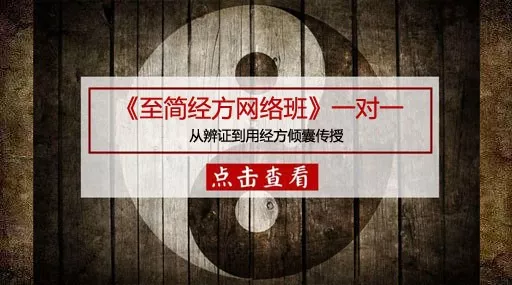
5. The Interrelationship of the Eight Principles and the Application of Eight Principles Differentiation
The distinctions between exterior and interior, cold and heat, deficiency and excess, and yin and yang are not merely isolated, static, or unchanging; rather, they are complex, interrelated, and capable of transformation. In summary, there exists a relationship of compatibility, mixture, and transformation among the eight principles.
(1) Compatibility
Compatibility refers to the simultaneous appearance of symptoms from two or more principles. For example, in the early stages of an external heat disease, there may be exterior symptoms, but further differentiation is needed to determine if there is accompanying cold or heat, thus leading to the classification of exterior cold or exterior heat syndromes; in chronic diseases, there may be deficiency syndromes, which require further differentiation to determine if they are deficiency cold or deficiency heat syndromes. The appearance of compatible syndromes should not be viewed equally; rather, there is a primary and secondary relationship. For instance, both exterior cold and exterior heat syndromes are primarily exterior syndromes, with cold or heat being secondary to the exterior syndrome, thus treatment should focus on releasing the exterior, using warm acrid herbs for exterior cold and cool acrid herbs for exterior heat. Similarly, both deficiency cold and deficiency heat syndromes are primarily deficiency syndromes, with cold or heat being secondary to the deficiency syndrome, thus treatment should focus on tonifying the deficiency, using warming methods for deficiency yang and nourishing methods for deficiency yin. In cases of compatibility between exterior and interior, the primary syndrome should be determined based on the specific condition.
(2) Mixture
Mixture refers to the simultaneous presence of opposing symptoms from two principles, such as cold-heat mixture, deficiency-excess mixture, and exterior-interior mixture (commonly referred to as simultaneous exterior and interior disease). Additionally, during the progression of a disease, some false appearances may arise, such as true heat with false cold or true cold with false heat. Therefore, during the differentiation process, careful observation and comprehensive analysis are necessary to discern the truth from the false, grasp the essence, and avoid misdiagnosis and mistreatment, which could delay the condition.
(3) Transformation
Transformation refers to the ability of symptoms from one principle to transform into those of the opposing principle. The relationships between exterior and interior, cold and heat, deficiency and excess, and yin and yang are both opposing and capable of transformation under certain conditions. For example, in cases of external cold presenting with aversion to cold and fever, if the condition progresses or treatment is inadequate, the pathogenic factor may penetrate the interior, leading to a transformation from cold to heat, ultimately resulting in a transformation from exterior cold syndrome to interior heat syndrome. Excess syndromes may transform into deficiency syndromes due to misdiagnosis or inadequate treatment, where the pathogenic qi gradually diminishes but the righteous qi is also damaged, leading to a gradual transformation into deficiency syndromes. Deficiency syndromes may give rise to various excess syndromes due to insufficient righteous qi, leading to the emergence of phlegm, dampness, qi stagnation, or blood stasis. Transformation occurs under specific conditions, and during differentiation, it is essential to continuously observe changes in the pathogenesis, diagnose and treat promptly to prevent the disease from worsening and to promote recovery.
When applying the eight principles of differentiation, the first step is to differentiate between exterior and interior to determine the location of the disease; then differentiate between cold and heat, deficiency and excess, to understand the nature of the disease and the comparative strength of the righteous and pathogenic qi; finally, the overall summary can be made using the concept of yin and yang.

Conclusion
The eight principles of differentiation is a method for diagnosing diseases by summarizing and analyzing the aspects of exterior and interior, cold and heat, deficiency and excess, and yin and yang. Although it should be combined with etiology differentiation and differentiation of defensive qi, nutritive qi, and blood for a more comprehensive diagnosis, it serves as the foundation for various differentiation methods, playing a role in simplifying complex conditions and highlighting key points.
The eight principles are not static but can transform under certain conditions; the progression from exterior to interior indicates a worsening of the disease, while the emergence of interior symptoms from exterior symptoms indicates improvement. The transformation from heat to cold or from excess to deficiency often indicates that the righteous qi is unable to overcome the pathogenic qi, while the transformation from cold to heat or from deficiency to excess often indicates a gradual recovery of the righteous qi.
Although the eight principles have distinct manifestations, they are rarely isolated and often exhibit complex relationships of compatibility and mixture, and sometimes false appearances may arise. Therefore, during the differentiation process, it is crucial to conduct thorough investigations, think critically, and grasp the essence of the disease, ensuring timely recognition of transformations to achieve accurate analysis, correct diagnosis, and appropriate treatment.
Recommended Books for Purchase:
(Reprint Statement: This article is reprinted from the internet, and the copyright belongs to the original author. If there is any infringement, please contact us for deletion!)
Further Reading of Original Articles:
Six Meridians and Six Major Disease Locations—Three Yin Cold Pathogen Locations! (Understanding the Last Article on Cold Damage) —> Click to Read
Six Meridians and Six Major Disease Locations—Shaoyang Meridian Organ Locations! (A Small Chai Hu Decoction Dominates) —> Click to Read
Six Meridians and Six Major Disease Locations—–Yangming Meridian Organ Locations! (Crucial for Treating Damp-Heat) —> Click to Read
Six Meridians and Six Major Disease Locations—Taiyang Meridian Organ Locations! (Understanding the Taiyang Meridian) —> Click to Read
Six Meridians and Six Layers of Vital Energy Restoration! (Complete Explanation of Self-Healing Energy) —> Click to Read
Comprehensive Explanation of Cervical Spondylosis! (Classical Treatment Methods + Secret External Treatments) —> Click to Read
Comprehensive Explanation of Toothache! (Cold Damage Thinking, Pathogenesis Differentiation, Classical Formula Symbolism) —> Click to ReadComprehensive Explanation of Insomnia! (Pathogenesis Differentiation + Core Ideas of Anchoring Yang) —> Click to ReadComprehensive Explanation of Fever! (Pathogenesis Differentiation of Cold Damage, Internal and External Treatment Methods) —> Click to Read
Comprehensive Explanation of Headache! (Learning the Key Points of Differentiation) —> Click to Read
For more exclusive TCM secrets, scan the QR code below to follow our public account:

TCM Internal Treatment Course:
“Simplified Classical Formula Online Class” one-on-one, from differentiation to using classical formulas, fully imparted!!! (Click to Enter)
TCM External Treatment Course:
“Hands-On TCM” can treat diseases without any prior knowledge!!! (One-on-one teaching) (Click to Enter)
TCM Learning Mind Map Series:
“Embedding Six Meridians Differentiation”—-Embedding Six Meridians Differentiation into Your Brain Electronic Mind Map (Click to Enter)
Self-learning TCM to Treat Yourself” Self-Help Integrated Mind Map Set (Click to Enter)
Yin-Yang Unified Treatment Method (Returning Complex TCM to the Unified Path) (Click to Enter)
Comprehensive Dialectical Map of Circular Motion (Micro and Macro Yin-Yang Ascension and Descent, Organ Positioning) (Click to Enter)
If this article has been helpful to you
Please scan to donate,as you wish

